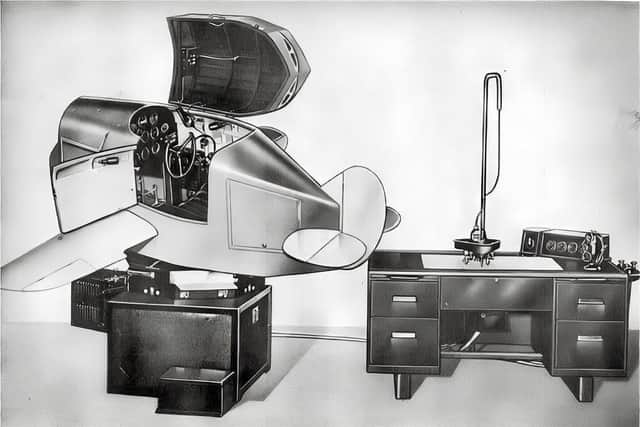Leighton Buzzard Wartime History: The Home of RAF Flight Simulators
and live on Freeview channel 276
While researching the Second World War aviation history of Leighton Buzzard for the ‘Fly A Flight’ flight simulator centre, records revealed that between 1942 and 1946, the town was the wartime home of Royal Air Force flight simulators.
The ‘Link Trainer’ was a fully moving synthetic trainer that enabled pilots to learn to fly and navigate using instruments, whilst eliminating the risks of real flight. The electric and air powered machine had been created in the United States by Edwin Link.
Advertisement
Advertisement
Just as war in Europe seemed inevitable, a recently retired RAF Air Commodore - P F M Fellows (leader of the first flight over Everest) - saw an early version being demonstrated and recommended the RAF test one. By the time war was declared, several hundred had been ordered to help train allied pilots.


The Air Ministry contract stipulated that the trainers must come from a Commonwealth nation, so Link built a factory on Gananoque Island in Canada to legitimately supply the RAF.
To manage the British end, the JVW Corporation that Edwin Link used for his international sales, agreed to set up an operation in London. The business grew rapidly, but when the risks of enemy bombing in the capital increased, Fellowes turned over space at his home in Aston Clinton, Buckinghamshire. By this stage, the Link Trainer had become “the universal method of flight instruction for the Royal Air Force and British Airways Ltd.”
By 1941, the Air Ministry appointed the JVW Corporation as its official ‘Service & Reconditioning Contractor' for all RAF Link Trainers and requisitioned a Leighton Buzzard factory.
Advertisement
Advertisement
These premises sat on the current junction of Leighton Road and Vimy Road – now the home of Tesco – on the industrial area that had once housed the Morgan Car Works and Vickers Ltd. (home to the WW1 Vimy Bomber).
Through to 1946, Leighton Buzzard was the home of the RAF Link Trainer flight simulators used by RAF Fighter, Bomber and Coastal Command. They became the backbone of RAF Pilot and aircrew training programmes, and the trainers were constantly updated to accommodate the latest developments in techniques and technology. As part of their work, JVW looked after the five flight and Celestial Navigation (CNT) simulators used at the nearby RAF Wing Bomber Command aerodrome.
The post war demand for simulators grew as military and civilian flight boomed, and when Air Commodore Fellows retired the company relocated to larger premises in Aylesbury, changing its name to Air Trainers Ltd.
It would later become Redifon Air Trainers, with a division formed to sell its complex electronic systems as office I.T. systems. One building they operated from in Leighton Buzzard looked directly over its former wartime site. We now know this as the Connell’s Group offices, in Lombard House.
In memory of Colin Wood, former Air Trainers Ltd employee and Link Trainer expert at the Trenchard Museum (RAF Halton), tragically lost in 2020 to Covid.